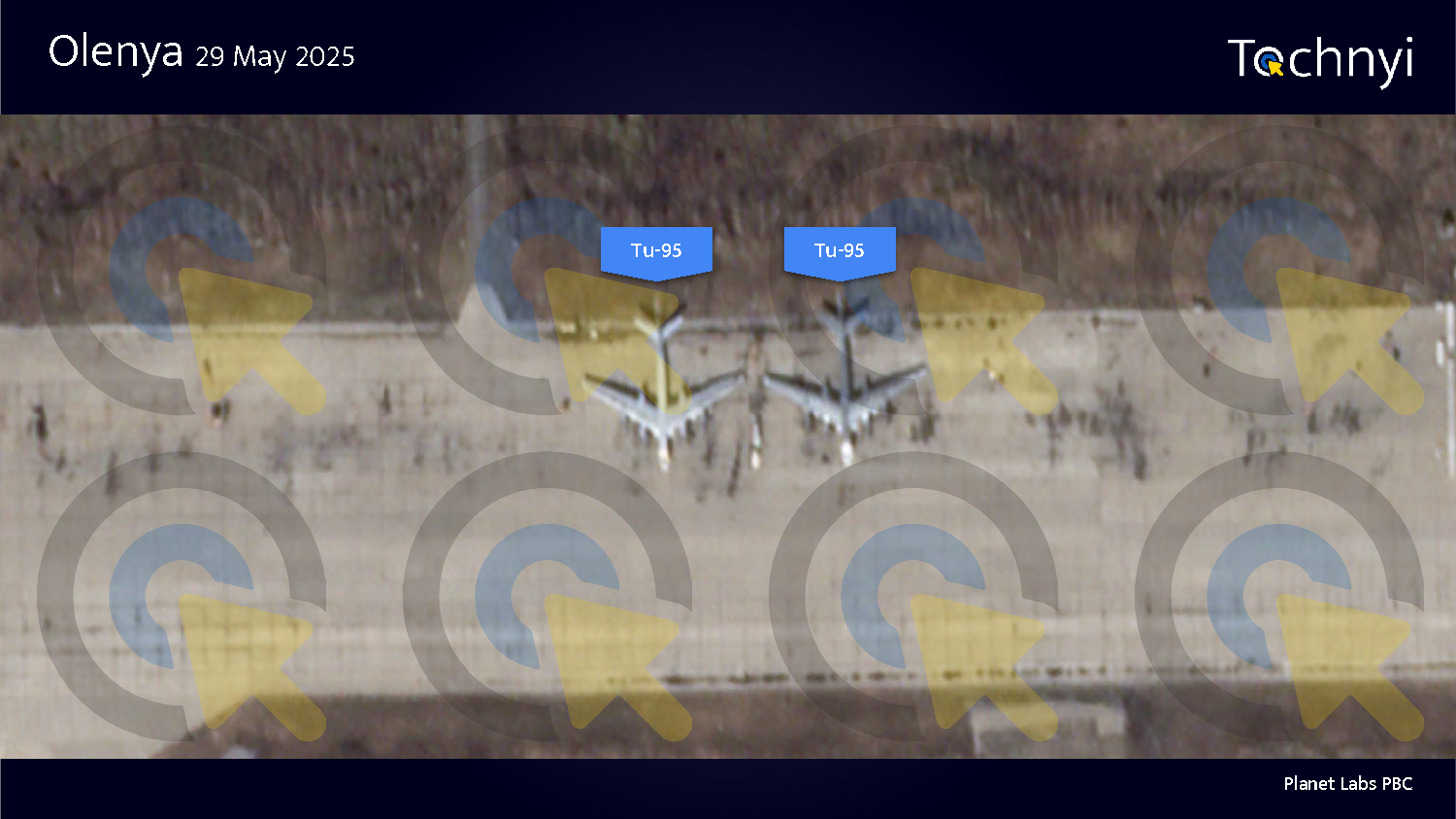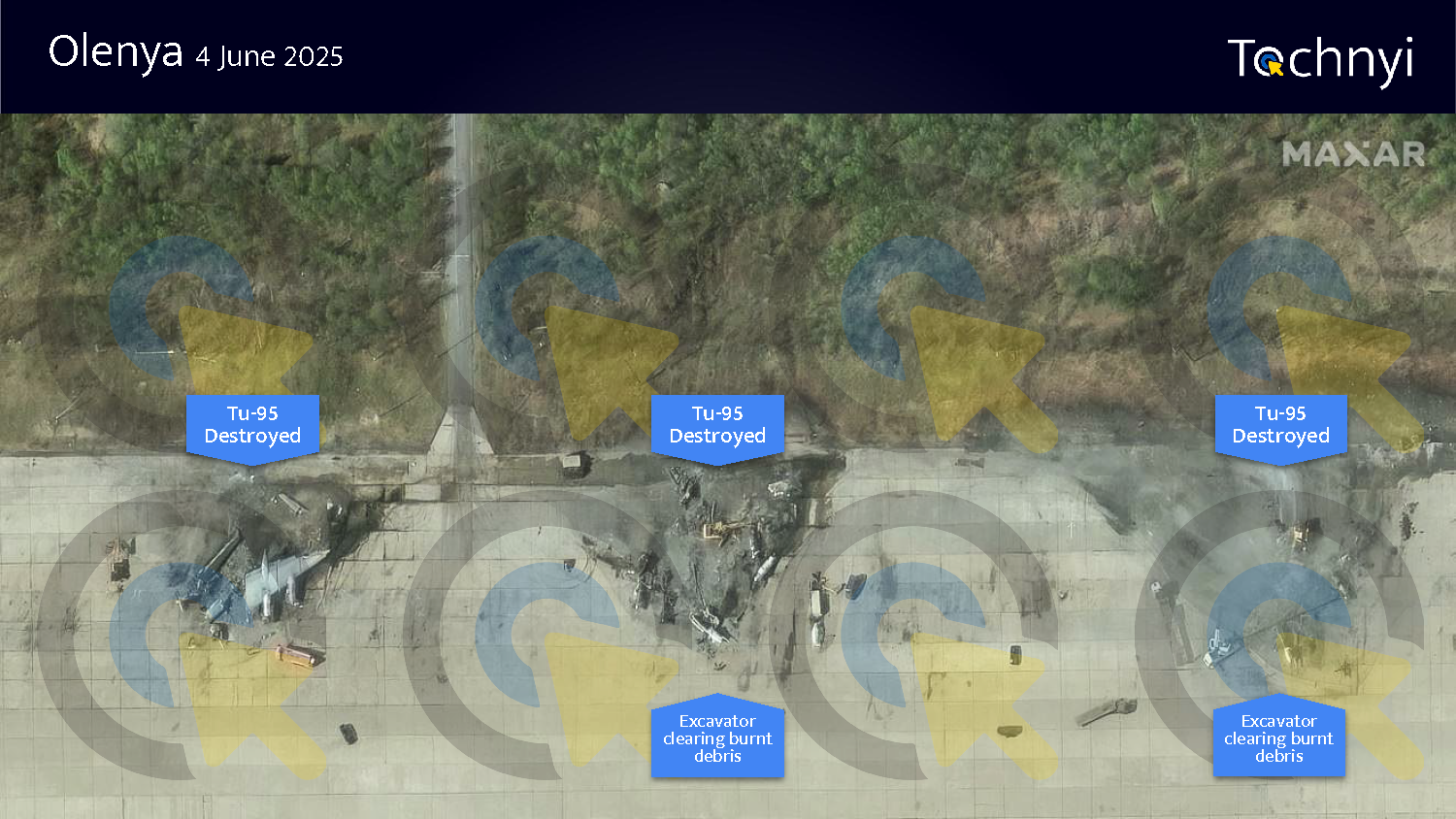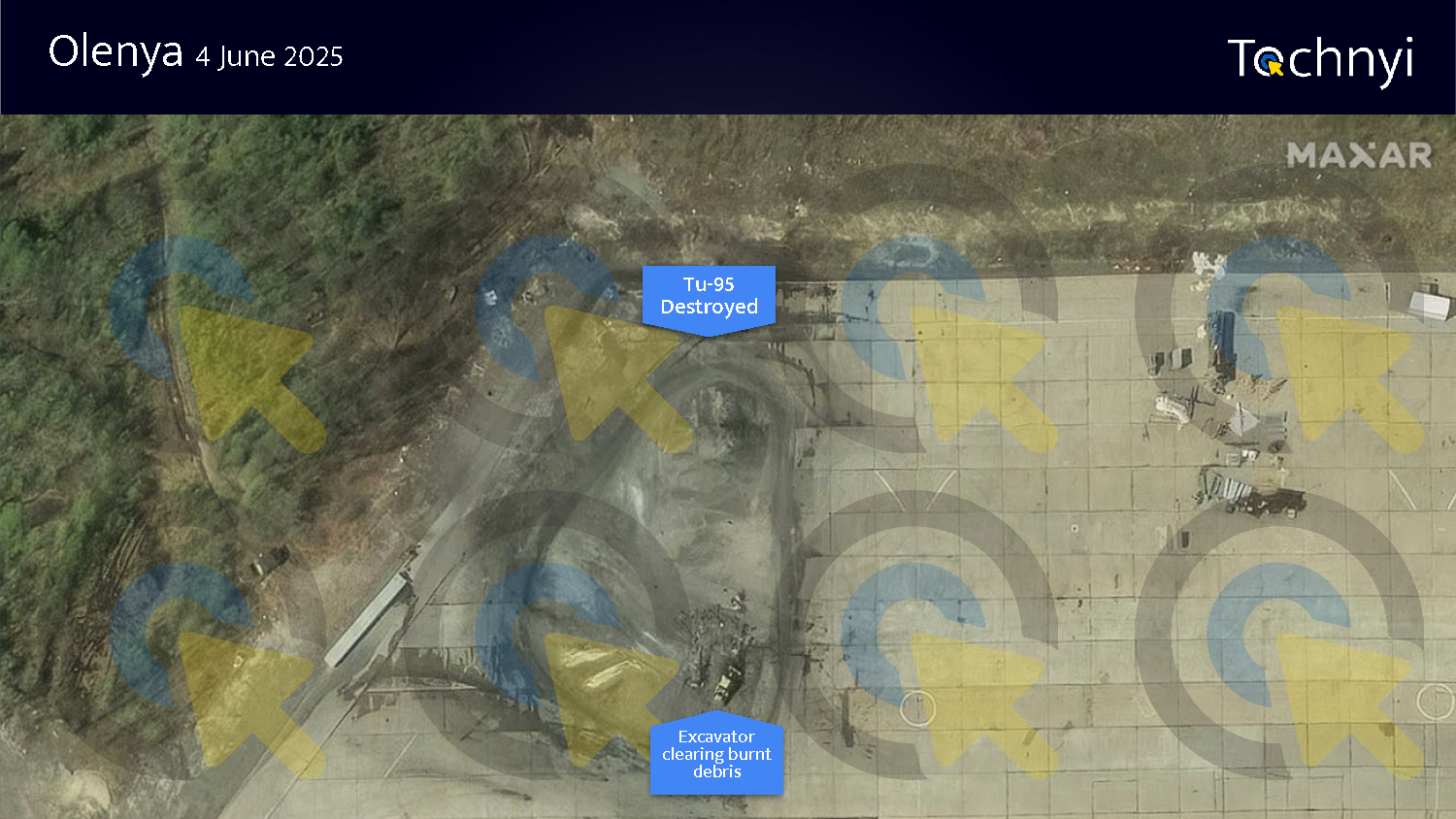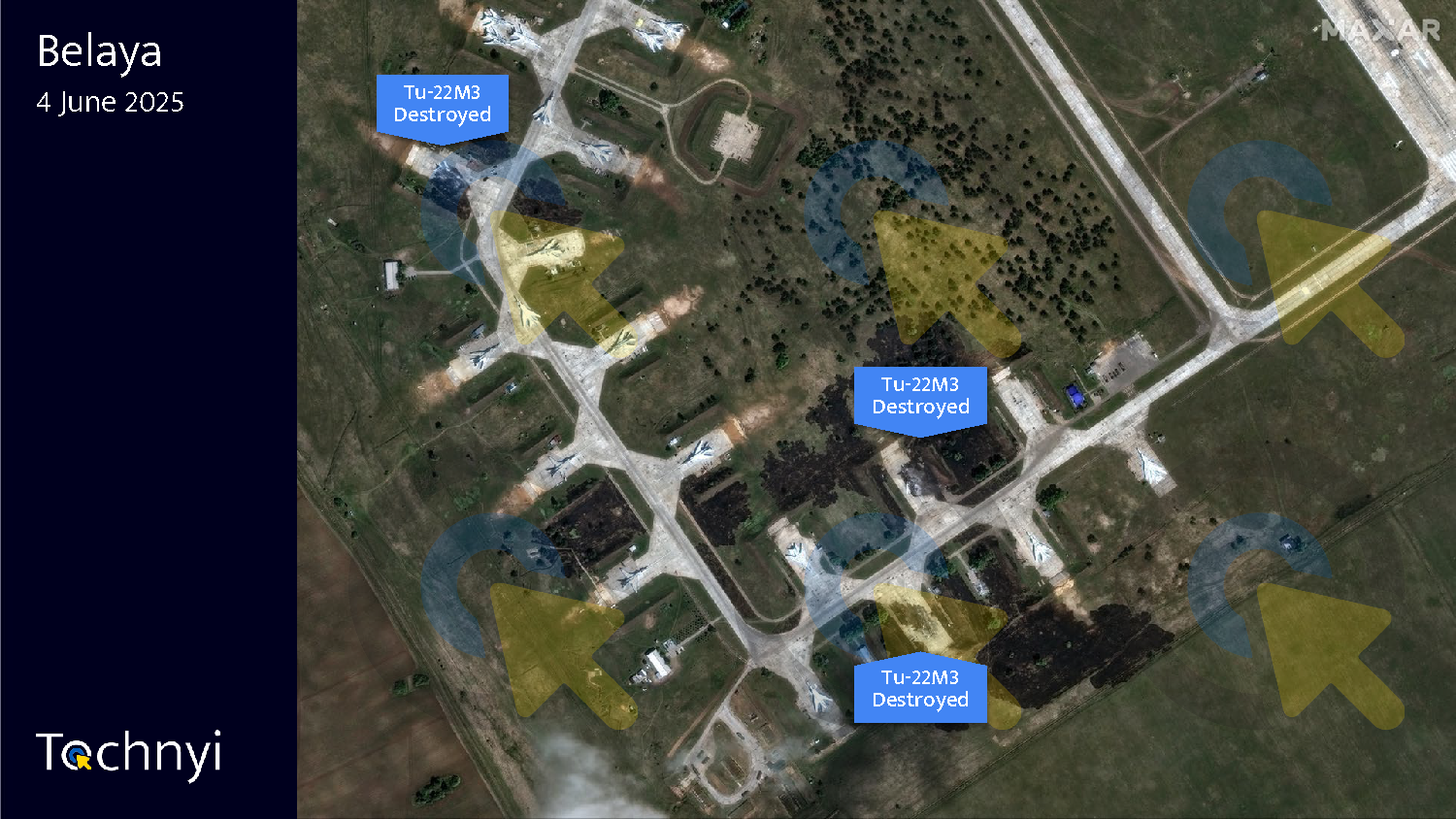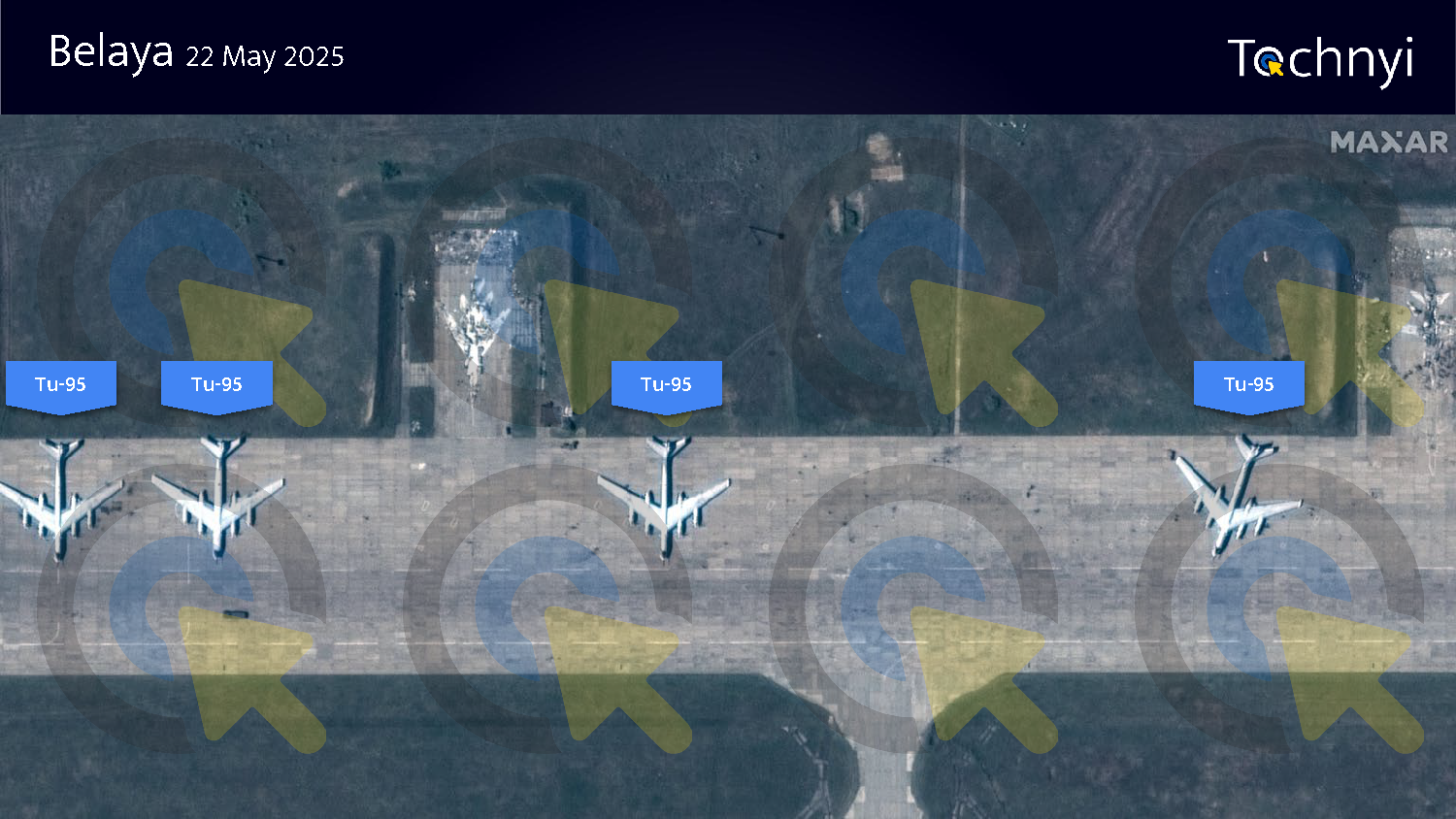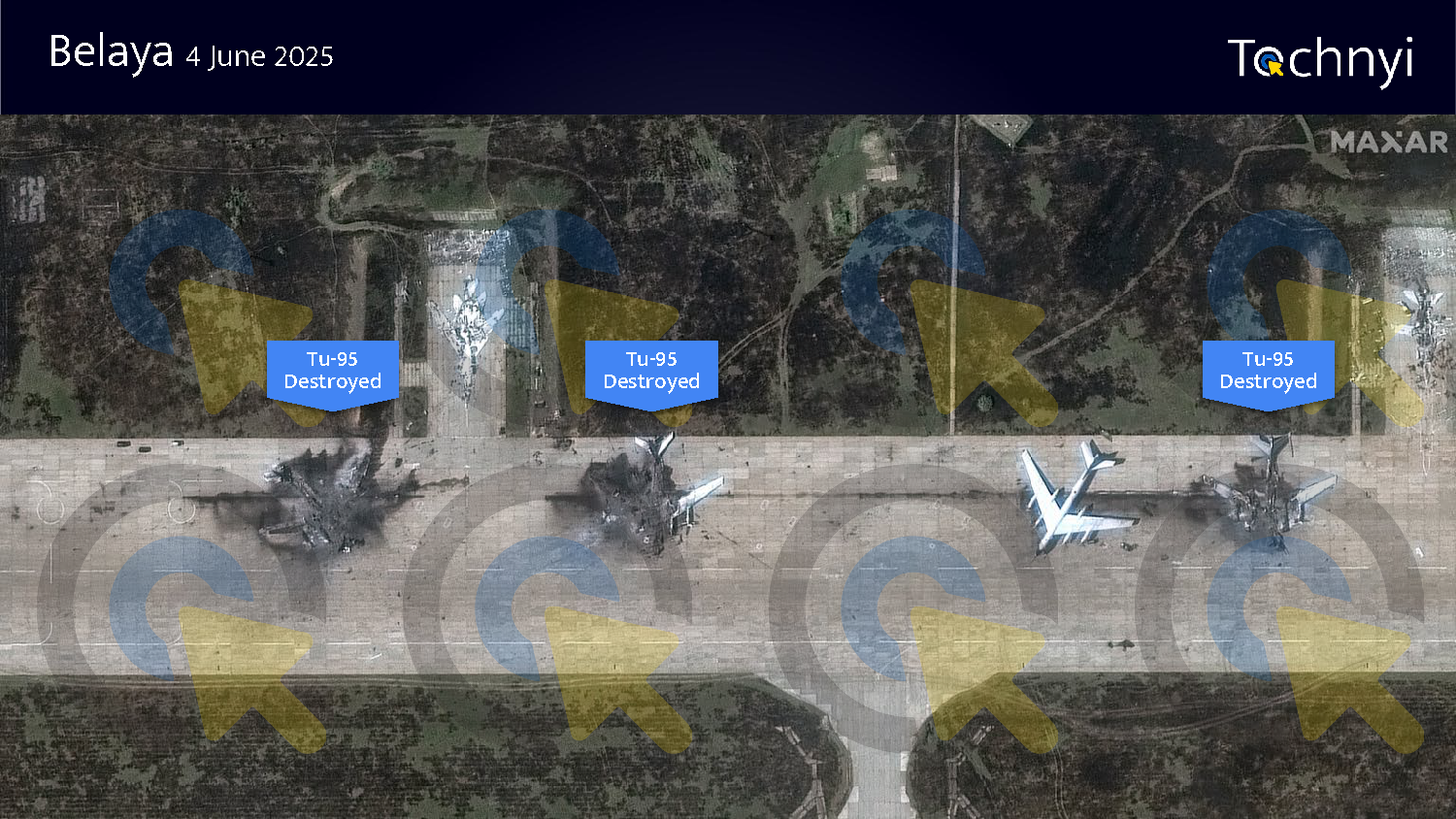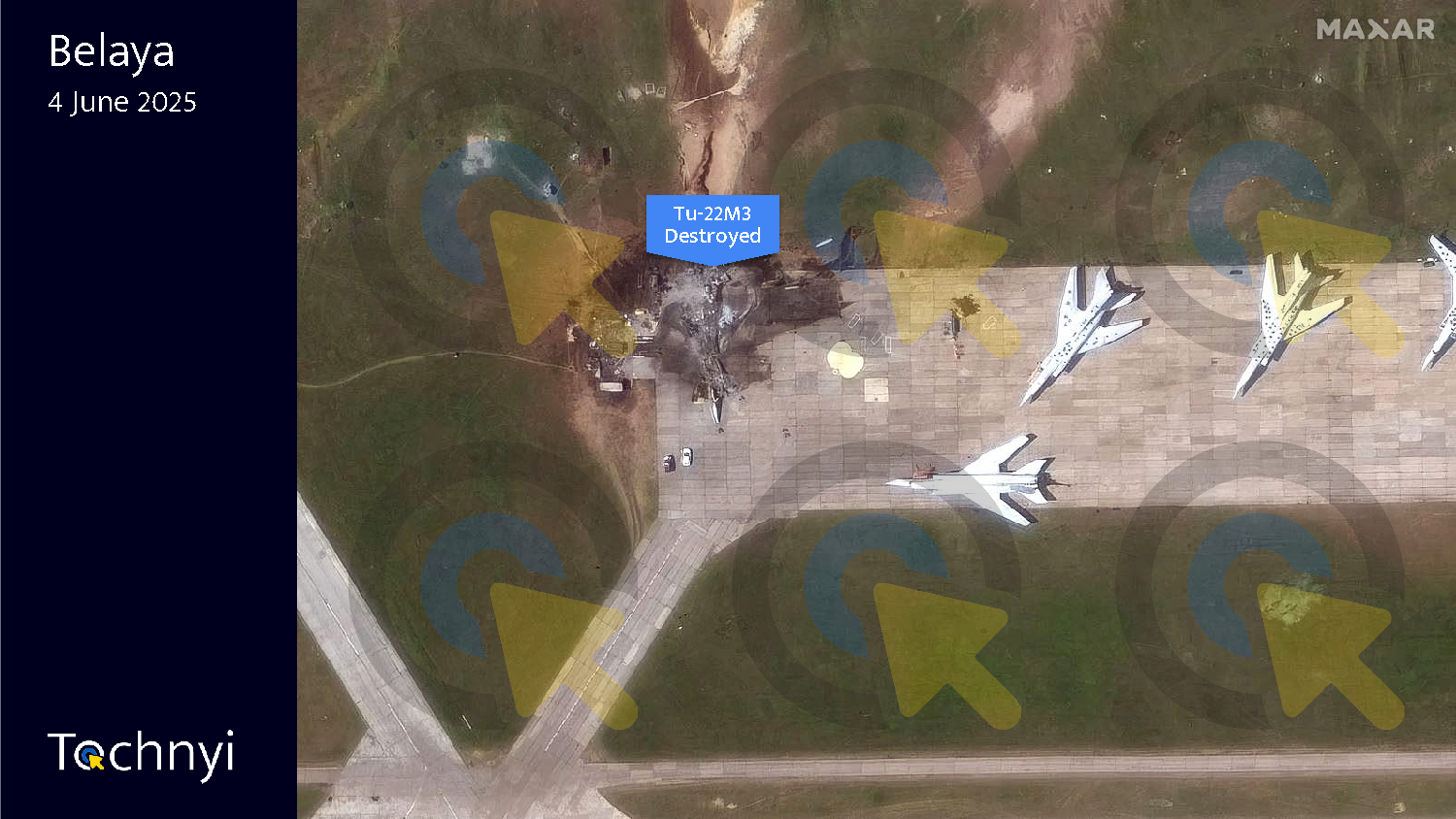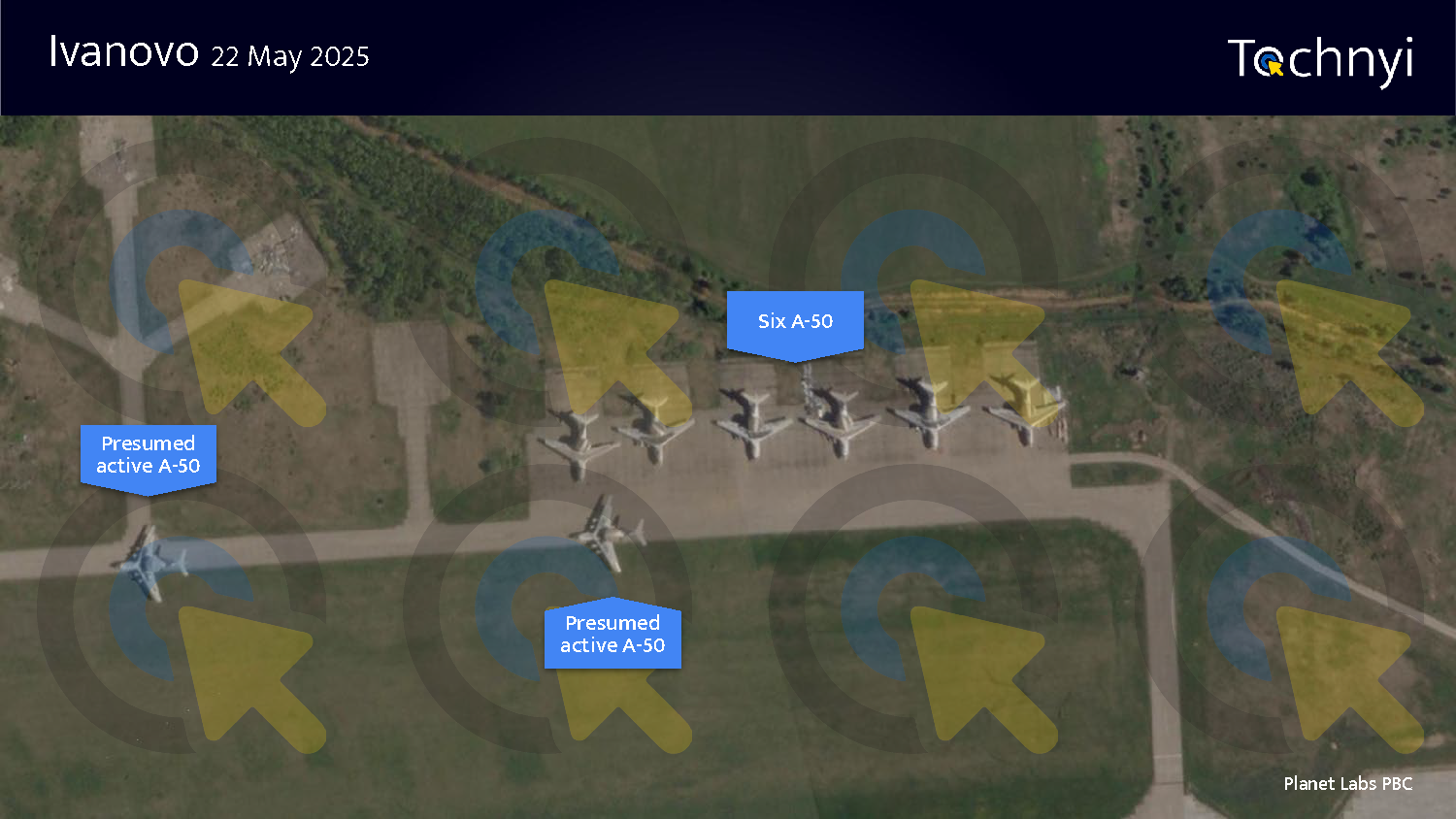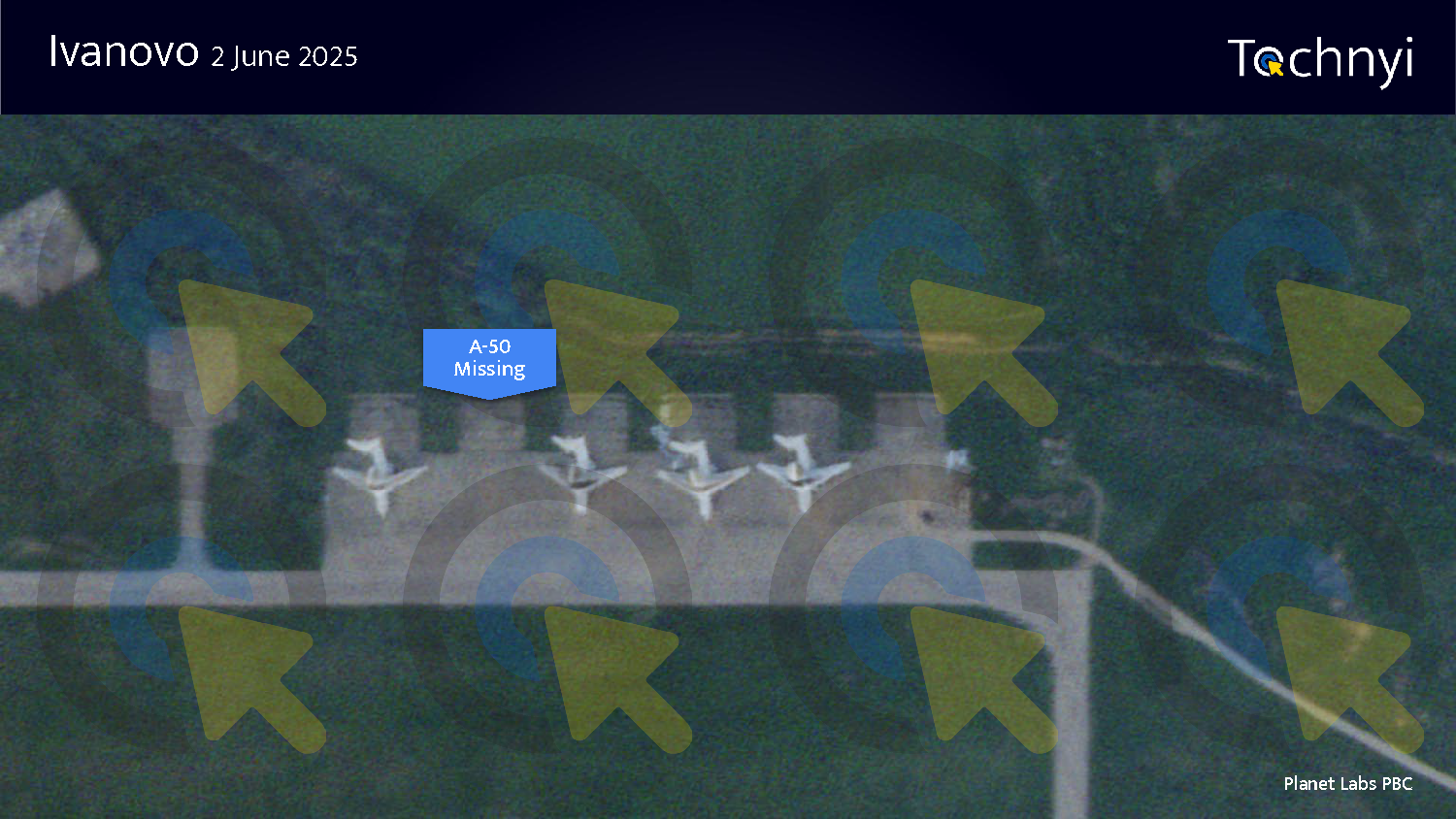In a remarkable demonstration of strength and confidence in unmanned long-range strike capabilities, Ukraine has successfully carried out a complex and daring operation targeting strategic Russian air bases, which are crucial to Russia’s long-range bomber capabilities. Codenamed “Spider’s Web,” the operation took 18 months to reach full fruition. The extensive planning involved in the operation saw the SBU infiltrate not only personnel but also materials necessary for the construction and operation of up to 117 FPV drones. On 1st June 2025, this culminated in a historic strike against vulnerable targets on several Russian air bases.
The series of 10 satellite images above shows before and after Operation “Spider’s Web” within the 4 different Russian air bases. You will find a total battle damage assessment table at the bottom of this article, based upon analysis of the satellite images and the FPV drone footage available.
The Operation
In an intriguing statement by the SBU which offered a glimpse into the technical aspects of this operation, it is possible to examine aspects of this operation which had been the subject of wide speculation during the first hours and days after the operation occurred.
During the operation, modern UAV control technology was used, which combined autonomous artificial intelligence algorithms and manual operator intervention.
In particular, some UAVs, due to signal loss, switched to performing their mission using artificial intelligence along a pre-planned route. After approaching and acquiring a specifically designated target, the warhead was automatically activated (https://t.me/SBUkr/14965)
Tochnyi’s analysts note several observations in light of this statement; the FPV drones were likely programed with a pre-programmed route towards their designated targets and that at some time during the approach human pilots were ready to remotely intervene and guide the drones toward an exact weak point on the aircrafts as pre-planned during training. We can observe evidence this taking place during the released videos, as we see behaviour typical of that exhibited by a human pilot in several of the video clips published by the SBU; and especially those in clips where latency was an obvious issue. Flight path correction being delayed and overcorrections in the flight path can also be seen. The involvement of human pilots was specifically mentioned by President Zelenskyy, who stated there was one operator per drone, with all drones controlled from Ukraine.
Another observation is that there are only 41 FPV clips available. Ukraine, however, has stated that they launched 117 drones. This indicates that either some of the base stations lost connection with the local cell network or a portion of the drones lost contact with the base station. We assess the first as the most likely scenario. In theory, this could mean that more than 41 drones arrived at their designated target and possibly hit their target, however it is not possible to assess any damage or hit from the remaining 76 FPVs. Since there is no other visual evidence other than the already thoroughly analyzed satellite imagery publicly released, including the latest video released by the SBU, it is not possible to assess what kind of damage the remaining FPVs did. Nevertheless, we cannot exclude the possibility that more aircraft were damaged.
Satellite imagery confirms the loss of seven Tu-95 “Bear” and four Tu-22M3 “Backfire” bombers, which form key parts of Russia’s Long Range Aviation fleet. Further analysis shows that, in some cases, drones hit targets either on purpose or potentially by accident, such as an Earth-Covered Shelter at Belaya that ended up with just some superficial burn marks.
The Russian Air Force has attempted to mitigate against these threats, cleaning up hardstands and moving in replacement aircraft to make it look like nothing happened. Nevertheless, they seem to forget that analysts can count and if a plane goes missing, it doesn’t just slip under the radar.
The principal strike objectives were Tupolev Tu-95 (NATO:Bear), The Tupolev Tu-22M3 (NATO:Backfire) and lastly the A-50 (Nato Maistay). Tu-95 is the workhorse of Russia’s strategic bomber fleet and the most frequent perpetrator of long-range missile attacks against Ukraine. Instantly recognizable by its massive swept-back wings and four powerful turboprop engines with distinctive contra-rotating propellers. The “Bear” is a symbol of Cold War endurance but also of modern Russia. In the current conflict, its primary mission is to act as a standoff launch platform, flying deep within Russian airspace to fire volleys of Kh-55 and modern Kh-101 cruise missiles. Because these bombers strike from hundreds of miles away, hitting them on the ground at their home airbases is one of the few ways Ukraine can proactively defend against their attacks.

In analysis of the video from (https://www.youtube.com/watch?v=y-ksNjIAkJo), one of most publicly known strikes, one detail of particular note is that the aircraft at the Olenya airbase, specifically the TU-95s located at approximately (68.14549, 33.45028), appeared to be operational and in the process of being serviced. For instance, a frame extracted from the video (see figure) clearly shows a KH-101 missile integrated with a left-wing hardpoint. Furthermore, other images confirm the presence of fully extended cockpit ladders and various pieces of maintenance equipment, such as ladders positioned near hardpoints and engines, in close proximity to most of the aircraft (see figure).

More advanced than the Tu-95, the Tu-22M3 is a supersonic, long-range missile carrier originally designed as a “ship-killer” for naval warfare. In Ukraine, it has gained notoriety for launching the wildly inaccurate Kh-22 and Kh-32 anti-ship missiles against land targets, including several civilian targets. The notoriously poor guidance of these missiles has been responsible for some of the war’s most tragic mass-casualty events, including the strikes on the Kremenchuk shopping mall and a Dnipro apartment building. The destruction or severe damage of Tu-22M3, as detailed within the table below, not only removes a missile platform from Russia’s aerospace forces but also eliminates a weapons system known for its indiscriminate devastation of civilian areas. Each strike on a T-22M3 demands closer scrutiny due to their unique targeting requirements. For instance, the incident depicted in the figure below illustrates a double attack on the same Tu-22M3. Although neither strike was captured by a third drone, it is evident that a significant opening in the upper fuselage became visible following the first strike. It is reasonable to conclude that the second and final attack rendered the airframe nearly irreparable, with this target consequently being categorised as destroyed.
This examination not only highlights the effectiveness of Ukraine’s strikes but also underscores the importance of careful and thorough documentation in assessing damage to Russia’s military assets.
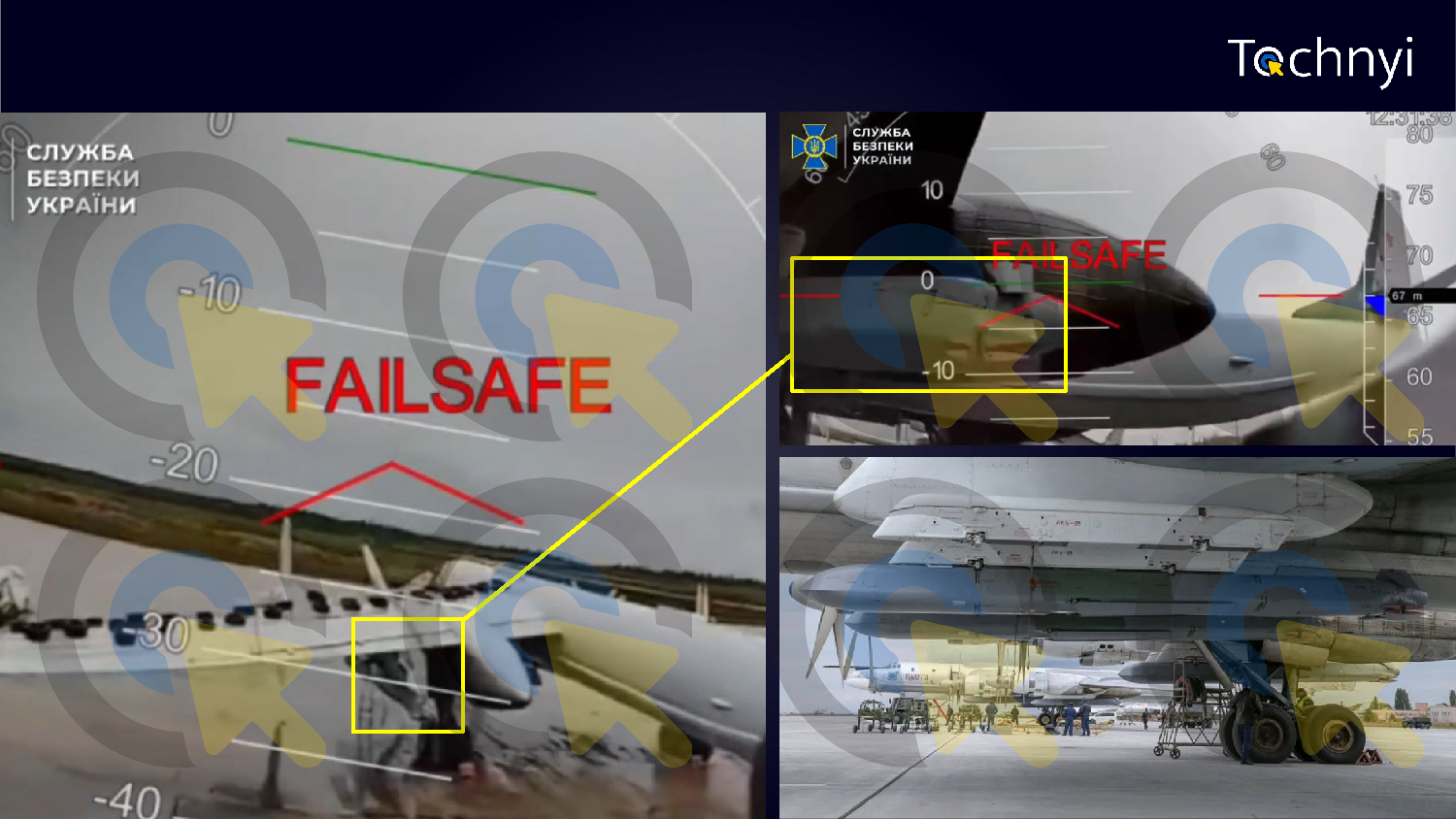
By observing a larger number of attacks on the Tu-22M3, it is possible to categorize the targeted aircraft into two distinct groups. The first group appears to consist of non-operational airframes that have likely been in long-term storage, possibly intended for spare parts. An example of these is shown in the image below, where three different aircraft were attacked by FPV drones. All are covered with a greenish layer of moss and mucilage which has accumulated over the years due to neglect and lack of maintenance, indicating they have not flown or even been properly serviced recently. Furthermore, the overall condition of these aircraft is extremely poor, with some visibly missing parts, particularly on the wings.
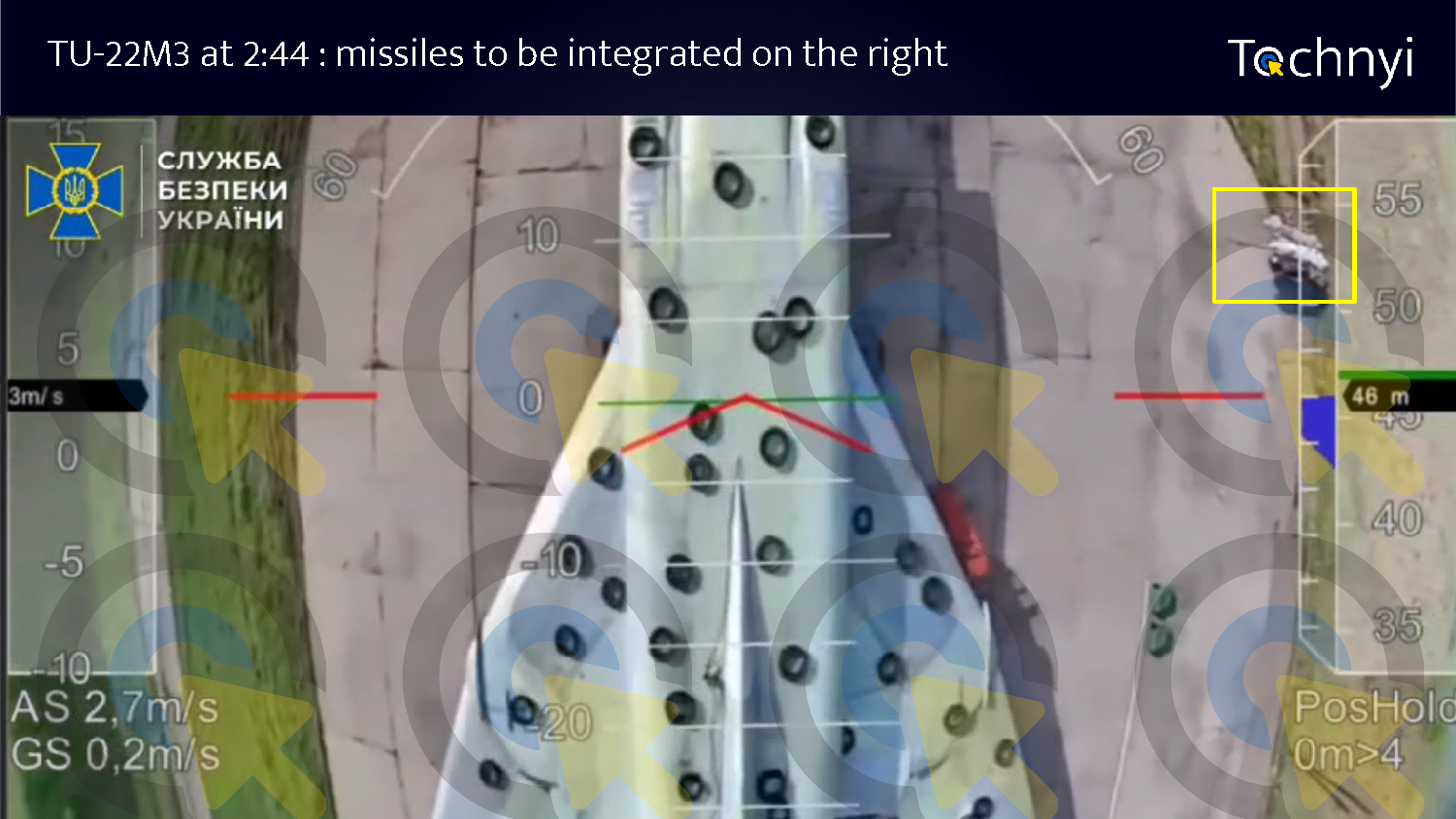
The Tu-22M3s previously discussed stand in marked contrast to the A-50s. The Tu-22M3s, a separate category of aircraft, which were targeted by FPV drone strikes appeared to be in significantly better operational condition. These aircraft are often positioned individually in revetments, indicating a higher level of care in their storage. Surrounding many of these bombers are signs of active maintenance: support equipment, ladders, and various servicing tools, all suggesting regular or recent upkeep. The airframes themselves show no significant external damage or signs of long-term neglect; their paint appears relatively fresh, and no obvious corrosion or biological overgrowth is visible. One particularly interesting visual distinction between the two groups is the presence or complete absence of tire coverings. The more neglected are often partially or fully covered with old tires, contradicting the principle of preserving the best aircraft at all costs. In stark contrast, the better-maintained airframes frequently lack such tire coverings altogether or feature far fewer of them. This discrepancy likely stems from human factors. Aircraft that are not expected to move for extended periods can be heavily protected without much concern for access or speed of deployment. However, in cases where readiness is a priority and frequent movement is expected the ground crews may choose to limit the use of protective materials. This reduces the time and effort required to prepare the aircraft for flight, allowing for quicker turnaround and minimizing labor, especially under strained conditions. Ultimately, the difference in condition and preparation between the two groups may highlight not only logistical constraints but also a degree of complacency or practical prioritization by the Russian ground crews, who must balance aircraft protection with operational readiness in a high-risk environment.
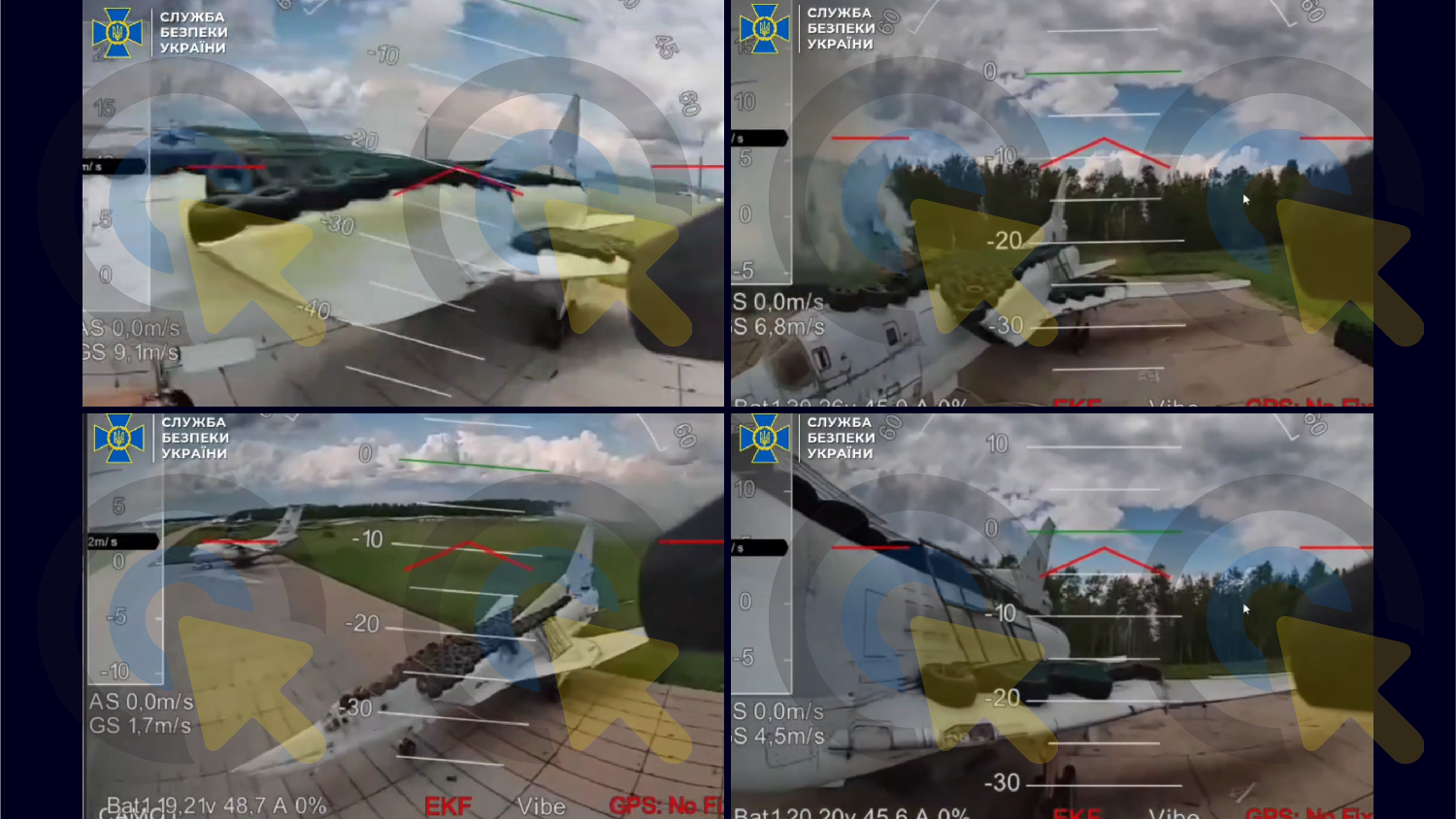
The photos at the bottom show the frame of a quadcopter, a common type of FPV drone, known to be reasonably small, fast, highly maneuverable, and relatively inexpensive. As mentioned before the “FPV” aspect is critical: a pilot on the ground wears goggles that receive a live video feed from a camera on the drone.
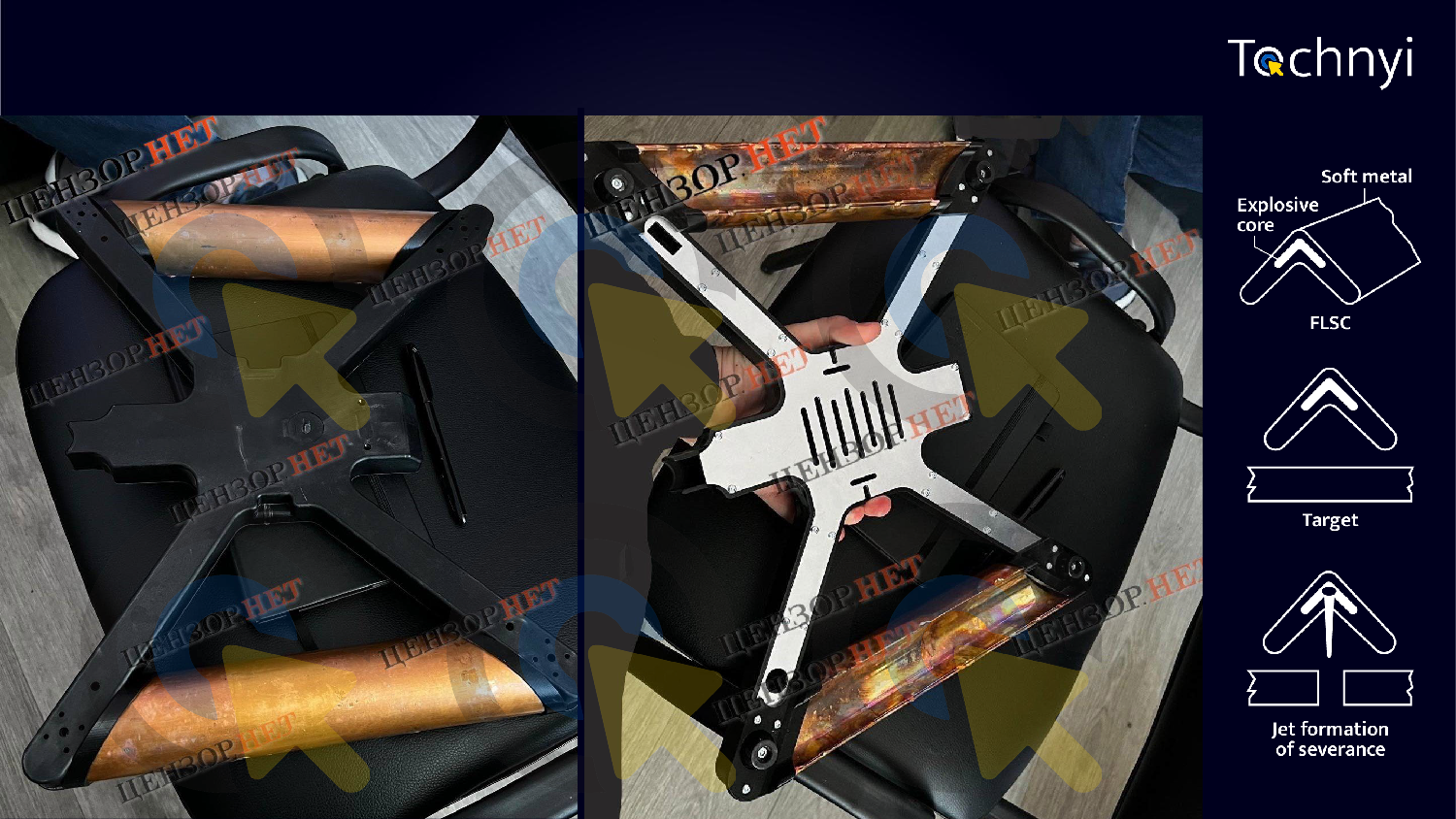
The diagram above explains the principle of a Flexible Linear Shaped Charge. The photos show two copper-colored, curved components attached to the drone’s arms, which are consistent with this type of warhead. A standard explosive detonates outwards in all directions. A shaped charge, however, uses a specifically shaped casing (in this case, a V-shape or U-shape made of a soft metal like copper) to focus the explosive energy. Upon detonation, the explosive core collapses the metal liner onto itself, forming a high-velocity jet of molten metal. This jet can travel at several kilometers per second and has immense penetrating power, acting like an industrial cutting torch or a plasma cutter. The key purpose of this warhead is not to create a large blast, but to cut or sever the target along a line.
Recent satellite imagery dated 22 May 2025 has revealed that a precision drone strike was executed against the Ivanovo-Severny Airbase in Russia, a pivotal operational hub for the Beriev A-50 AWACS (Airborne Warning and Control System) aircraft. Although a comprehensive damage assessment is still pending, initial analyses confirm that the strike successfully targeted these high-value assets, with reports indicating that at least one A-50 was hit.
The accompanying image illustrates a significant concentration of these vital aircraft on the tarmac, with a row of six A-50s parked wing-to-wing, alongside two additional aircraft marked as “Presumed active A-50,” positioned separately on the tarmac. Notably, the aircraft that was struck had not moved from its position in years, highlighting its redundant status.
It is important to remember that the A-50 functions as a flying command post and radar station. Its extensive rotating radome enables it to detect aircraft, cruise missiles, and other aerial threats from hundreds of kilometres away, thus serving as a crucial “force multiplier” that directs fighter jets and coordinates air defence. Given their complexity and strategic significance, these aircraft are extremely valuable assets within the Russian Air Force, and their loss represents a substantial blow to operational capability.
Combining the precision of an FPV drone with the cutting power of a linear shaped charge creates a weapon perfectly suited for destroying high-value assets on an airfield, particularly aircraft. The primary goal when striking aircraft on the ground is not just to damage them, but to render them completely unflyable and irreparable a “hard kill.” A standard explosive might punch a hole or create shrapnel damage that can eventually be repaired. A linear shaped charge is designed to prevent this.
In the case of Tu-95 the wings have been targeted by detonating the charge as it passes over, the molten jet would slice through the wing’s skin and, more importantly, through its main structural spar. A cut through a wing spar is catastrophic damage, effectively breaking the aircraft’s back and making it a total write-off.
In other situations, documented in the video (https://www.youtube.com/watch?v=y-ksNjIAkJo), the drone could be flown along the top of the aircraft’s fuselage. A linear cut along this “spine” would sever control cables, hydraulic lines, electrical wiring, and critical structural frames. This would essentially gut the aircraft from the inside out.
Last but not least, the tail section was also hit on several occasions. Similar to the wings, a precise cut through the vertical or horizontal stabilizers would destroy the aircraft’s flight controls, making it inoperable.
Interestingly, during the damage assessment analysis at various airbases, a noticeable disturbance in the Synthetic Aperture Radar (SAR) band was observed, particularly at Olenya Airbase. This suggests that the Russian air forces attempted to hide the aftermath of the strikes from SAR satellites, as they were the only available means of detection due to significant cloud cover.
By utilizing the Radar Interference Tracker developed by Ollie Ballinger (https://www.bellingcat.com/resources/2022/02/11/radar-interference-tracker-a-new-open-source-tool-to-locate-active-military-radar-systems/ ), it was possible to accurately identify the area with the highest disturbance in the signal. This tool is designed to detect interference patterns created by radars or other sources. It utilizes data collected daily, monthly, or yearly from Sentinel-1 satellite. In this case, the satellite successfully identified a typical “X” pattern in the area of the airbase. This pattern is generated as the satellite passes over the area multiple times in both ascending and descending orbits, allowing it to effectively triangulate the source of the interference.
Upon examining the center of the “X,” it became clear that the interference originated from the missile defense headquarters, which hosts a new type of radar system built around 2017. This radar appears to be the source of the disturbance.
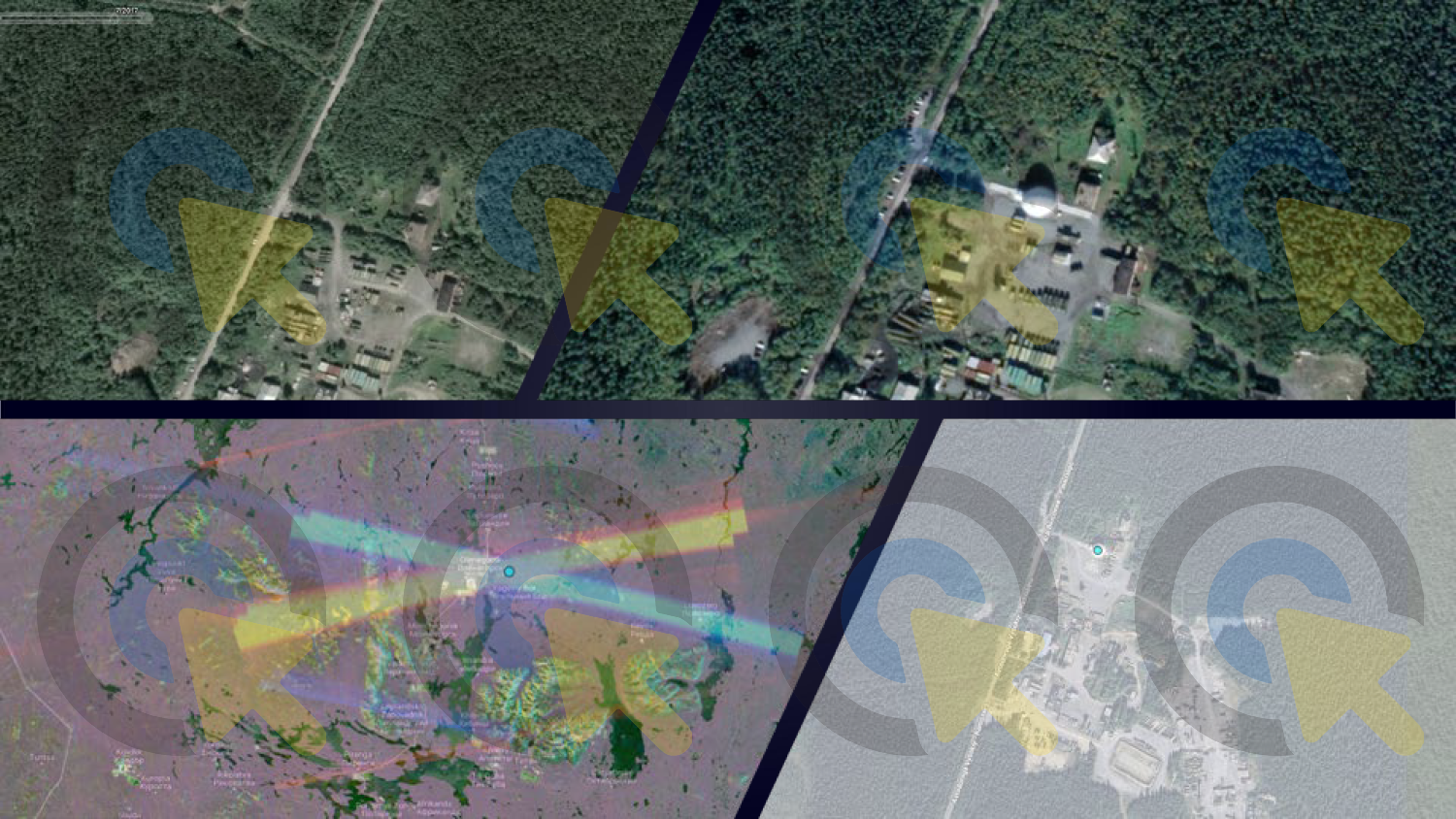
Battle damage assessment
Using a combination of satellite imagery and currently available open source video, Tochnyi concludes the following BDA.
| Olenya totals | Destroyed | Heavily Damaged | Unknown/attacked |
| TU-95 | 4 | 1 | |
| TU-22M3 | 1 | ||
| AN-12 | 1 |
| Ivanovo totals | Destroyed | Heavily Damaged | Unknown/attacked |
| A-50 | 2 |
| Dyagilevo totals | Destroyed | Heavily Damaged | Unknown/attacked |
| TU-22M3 | 1 | 2 |
| Belaya totals | Destroyed | Heavily Damaged | Unknown/attacked |
| TU-95 | 3 | 2 | |
| TU-22M3 | 4 | 1 | 3 |
| Totals | Destroyed | Heavily Damaged | Unknown/attacked | |
| TU-95 | 7 | 1 | 2 | |
| TU-22M3 | 4 | 2 | 6 | |
| A-50 | 2 | |||
| AN-12 | 1 | |||
| Total attacked | ||||
| Total | 12 | 3 | 10 | 25 |
